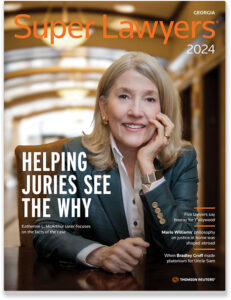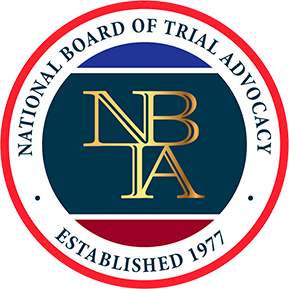The attractive nuisance doctrine in Georgia arose from English Common Law roots dating back (in American jurisprudence) to the 1800s. Even then, our lawmakers knew that children are likely to trespass on the lands of nearby property owners when an apparatus, object, playground area, or device can attract children.
While a warning sign is sufficient to alert adults, small children may not yet read or even comprehend typical attractive nuisance warning signs. Hence, maintaining the condition without sufficient “barriers” to protect the children from entering can result in the business owner or homeowner being liable for injuries.
Yet, the attractive nuisance law (to prevent injuries or children’s deaths) was part of English Common Law and was not statutorily created by Georgia’s Legislature. Common sense tells us that everyone wants to prevent children from being drawn to an apparatus or (where a nearby property owner is maintaining anything that will be an attractive nuisance.
What are the elements of attractive nuisance? In short, the general rule that a trespasser is owed no duty from the landowner to make premises safe has a different application when it comes to apparatuses or “things” that might lure a child to trespass to get to that “attractive” nuisance.
Thus, the attractive nuisance elements (in 2024) call for a property owner to use care to eliminate the danger posed by the attractive nuisance (swimming pool, construction site equipment or trenches), or possibly be held liable for death or serious injury of that child.
Our State’s highest court cited this from the now-famous case of Ferguson v. Columbus & Rome Railway, 75 Ga. 637 (1885).
The early railroad turntable cases are generally credited as the beginnings of what became known as the attractive nuisance doctrine in American jurisprudence. Prosser, Trespassing Children, 47 Cal. L. Rev. 427 (August 1959). The turntable in Ferguson was in the railroad yard and left unsecured in an area that was known to be frequented by the public.
A ten-year-old child was injured while apparently riding on it. The court held the child could recover for the negligence of the railroad.
The current status of Georgia law can be delved from Gregory v. Johnson, 249 Ga. 151, a 1982 Georgia Supreme Court case involving a child’s death in a swimming pool without fencing or barriers around it:
- “The theory of attractive nuisance arose to protect trespassing children in circumstances where their presence could be reasonably anticipated and measures to protect them could be undertaken without placing a heavy burden upon the owner’s unrestricted use of his land. See Prosser, Sec. 59, Law of Torts (4th Ed., 1971). Prosser states that since the 1920’s the trend in the law of trespassing children has been to shift from the legal fiction of attractive nuisance to foreseeability of harm and traditional concepts of negligence. This approach has also been recognized though not much applied in Georgia.”
The next part of this landmark opinion is applicable to all types of attractive nuisances, in the Peach State:
- “We find the approach of the Restatement on this issue is sound and not in conflict with the laws of this state as first expressed in Ferguson. A landowner is not an insurer of the safety of children, even if he chooses to build a swimming pool. “While it is actionable negligence for one to leave unguarded on a part of his own premises, which he knows is frequented by children of tender years for the purpose of play, a dangerous thing or condition which may injure such children, he is not required to provide against remote or improbable injuries to children playing upon his land.” McCall v. McCallie, 48 Ga. App. 99, 100 (171 SE 843) (1933). The duty imposed is to exercise reasonable care to prevent foreseeable injury, not to protect against any injury.”
While the Restatement of the Laws about Torts that Prosser’s book mentioned were being followed back in 1982, and updated version that broadened liability to some adult “trespassers” was firmly rejected by the Georgia General Assembly in 2014. This is shown in the footnotes of the 2014 legal update, and codified in OCGA Section 51-3-3:
The General Assembly finds that the provisions of the American Law Institute’s Restatement of the Law Third, Torts: Liability for Physical and Emotional Harm, §§ 50-52 (2012), which seek to impose broad new duties on those who own, occupy, or control premises, including the duty to exercise reasonable care to all trespassers, do not reflect the public policy of the State of Georgia.
In Georgia, then, beyond child trespassers, a landowner owes NO duty to adults who get harmed or killed, except that the landowner cannot set up a willful or wanton “device” to shoot, trap or injure such potential adult trespassers. Hence, an adult-age trespasser who jumps a fence or ignores “no trespassing” signs will not have a viable cause of action, in Georgia.
Kathy McArthur was named the Cover Story Attorney for 2024 by Super Lawyers for Georgia, out of over 33,100 possible other attorneys.
Our team of legal experts provides legal services across the state from our Macon, Warner Robins, and Atlanta offices. Previously, we have handled attractive nuisance cases from various locations including Albany, Columbus, Savannah, and Augusta.
For more information about the McArthur Law Firm or to set up a free consultation to learn what we may be able to do to help you with your premises liability Georgia case, give us a call at one of our premises liability law firms in Georgia or fill out our online contact form.
- Atlanta Premises Liability Law Firm: 404-565-1621
- Macon Premises Liability Law Firm: 478-238-6600
More Info on Attractive Nuisance Strict Liability in Georgia
If you’d like to learn more about premises liability in Georgia, read our informative articles below. We explore a wide range of attractive nuisance strict liability and other premises liability issues in depth.
- Premises Liability, Part 1: Injured At A Hotel
- Premises Liability, Part 2: Injuries In Nursing Homes
- Premises Liability, Part 3: Injured On A College Campus
- Understanding Liability if Someone Gets Hurt While Working on Your Property in Georgia
- Dog Bites and Animal Attacks
- Video Surveillance Footage in Premises Liability Cases
- Negligent Security
- Swimming Pool Accident
- Parking Lot Falls
- Slip and Fall Accidents









